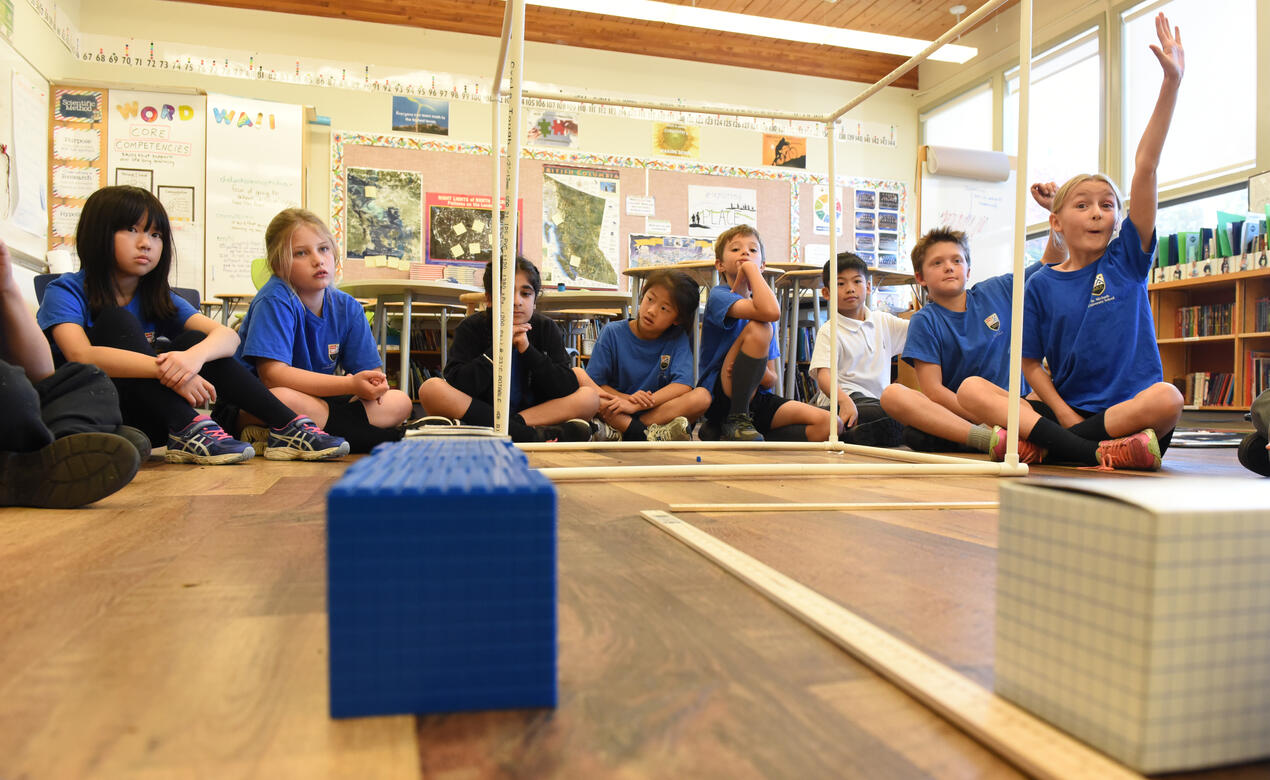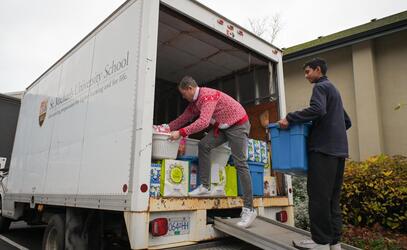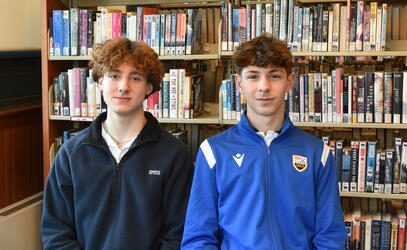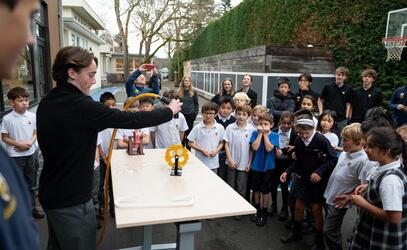
"Pick a number between 40 and 100." (This isn't a mind-reading trick; it's a math lesson.)
Grade 2 student Tommy chooses 68 and writes the number on a small whiteboard.
"Use Base 10 blocks to visually represent that number in five different ways."
Tommy sticks his hand in the plastic bin filled with yellow, beige and orange base 10 blocks. (Base 10 blocks are those small, colourful 3D blocks that represent ones, tens and hundreds.) Tommy quickly counts off six "rods" (which each represent 10) and eight "units" (which each represent 1). He writes the first equation as 60+8=68.
Tommy then swaps one rod for 10 cubes and confidently writes 50+18=68.
He repeats this process three more times to visually represent 68 using different configurations of base 10 blocks.
"Numbers are built up of other numbers. Number sense comes through experience and investigation; it comes through play," says Grade 2 teacher Mrs. Nicole Tripp. "Especially with a subject like math, working with your hands tends to help the concepts and lessons stick."
This is what math class is like at the Junior School. It's more than just learning how to count and write equations. Math is an interactive subject where students learn, understand and retain concepts and skills in a hands-on, collaborative way.
"Math has evolved in how it's taught because there's more research now into how we learn and how the brain works. The basic skills are still important, but we've also added this other element that research shows helps create math-literate students who are comfortable problem solving," says Mrs. Becky Anderson, Director of the Junior School. "Math today is a better experience for students because they learn different strategies to help it make sense to them, while still doing all of the fundamentals."
Today, students in Mrs. Tripp's class are learning how to organize numbers and how to count efficiently through a variety of activities and games.
"When you're in the process of learning something, if it's concrete, if you're physically manipulating objects, if you're tying it to real-world applications, it helps us learn and retain it," Nicole says. "At this age, a lot of the concepts are new and really foundational, so this kind of learning helps set them up for being able to do harder and harder math in the years ahead."
Math through Real-World Application
Recently, the Grade 2 students read The Warlord's Beads, a story set in ancient China about a warlord's apprentice who inadvertently invents an abacus as he tries to take inventory of the warlord's many treasures. The story is used to help young learners understand real-world application of place value in math.
"The book is a good launching point for our number system. I try and bring in storybooks as much as I can because of the connection piece," Nicole says. "The students can visualize that guy counting things when they're counting their own blocks. They can refer to the story and they now know the language around base 10."
Through repetition at this age and stage, learners build a solid foundation of math skills and how they apply to their lives.
"It's about trying to integrate math into their reality. Even if it's just something like, 'How many students are in class today? We're supposed to be 17 and have two students missing. How many does it leave?" Nicole says. "We try to show them that they can find links to math when they're at the grocery store or at the park, and how they can actually use those skills in the world."
Math through Experiential Learning
In addition to the "Pick a number between 40 and 100" lesson, Grade 2 students work diligently on a variety of other hands-on math activities that teach and reinforce learning math skills in different ways.
Taking their cue from The Warlord's Beads, students are tasked with counting a large amount of colourful plastic buttons and are asked to group the chips so they don't lose track of how many they have.
"It allows students to really think about questions like 'How does organizing items into groups of 10 enable me to be a more accurate counter?' and understand why that's effective when they're working hands-on," Nicole says.
The other important piece of experiential learning is having students reflect on their learning afterwards.
"We debrief and talk about how things worked and why things worked. Anyone can pick up a calculator and do addition or subtraction, but we want them to be able to explain it and show it – kind of like a justification – so we know they understand," Nicole says.
"When you look at 4x5, a parent might think, 'You should just know it's 20.' And they will know it's 20, but there's an important piece which is to understand what 4x5 actually means," Becky adds. "If it's only about memorizing equations, what happens if you don't remember it? If you teach students strategies to problem solve, they can figure out the answer to this basic question and harder concepts because they understand the how and why of the math equation."


